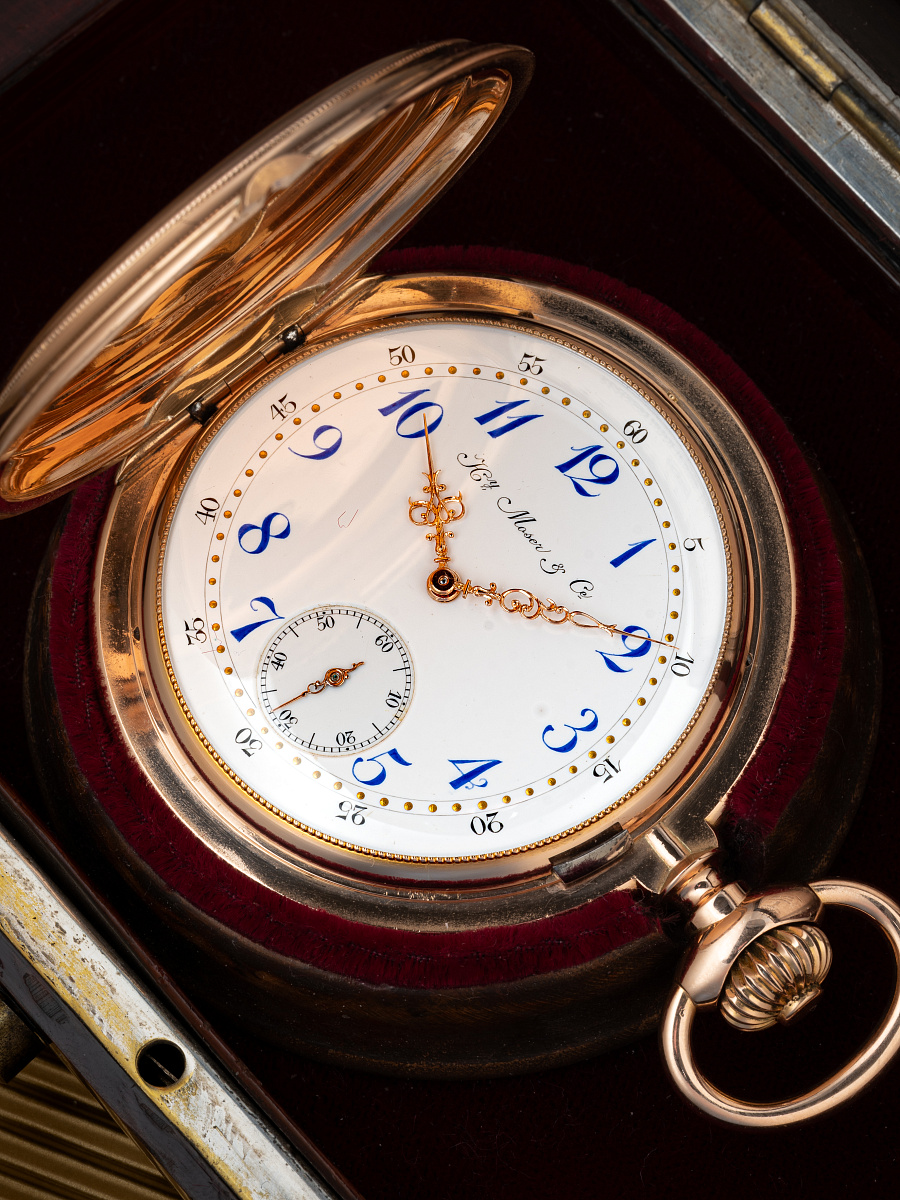H. Moser & Cie

Don't hesitate to ask for any additional information, Artemy is ready to assist and guide you in your decision
DETAILS
The history of H. Moser & Cie, one of the oldest Swiss watch brands in the world, which is approaching its 200th anniversary, has an interesting feature: The Swiss Heinrich Moser registered the company in St. Petersburg, the capital of the Russian Empire, in 1828. However, he kept the main production facilities in his home country and founded a watch factory in Le Locle just one year later, in 1829. Heinrich Moser was a talented entrepreneur who not only expanded the business in Russia, but within a few years also organized the distribution of watches in other countries, including Japan, China, Persia and Turkestan. However, the main market for H. Moser & Cie remained the Russian Empire, and it was in this market that the brand achieved its greatest fame.
The company’s strategy included flexibility in the composition of the collection. A large part of the range was assembled in the company’s workshops in the Russian Empire from components supplied from Switzerland, including from the H. Moser & Cie factory in Le Locle, in order to save on customs duties – this system was in place until 1917-1918, when it was destroyed due to the economic policies of the Bolsheviks who came to power in Russia. At the same time, in the 19th and early 20th centuries, high-quality watches could be ordered from third-party suppliers. This pocket watch, an extremely rare example from H. Moser & Cie with a so-called Jürgensen caliber, clearly falls into this category.
REASONS TO BUY
The diversity of the collection and the flexibility of the strategy of H. Moser & Cie, which was founded almost two hundred years ago, in 1828, in the Russian Empire, always gives us hope of discovering a real treasure. Such as this Lépine pocket watch in 18-carat gold with a so-called Jürgensen caliber and a two-part decorative enamel dial, which was probably made for the Eastern market in 1882 or later. It is an extremely rare pocket watch by H. Moser & Cie with a Jürgensen caliber, the design and construction of which is rightly associated with Jules Jürgensen, a watchmaker from a distinguished dynasty. The distinctive and rare white enamel dial with blue Breguet-style Arabic numerals, a “pearl” minute track with dots applied with gold powder and a 5-minute marking with black Arabic numerals, Louis XV hands and a small seconds hand in the same style definitely adds to the appeal of the watch.
ABOUT THIS WATCH
The origins of the Jürgensen caliber date back to the 1850s, when the venerable Danish, but in reality Swiss, watch brand Jules Jürgensen began producing pocket watches with a special movement whose design was supposedly originally developed by Louis-Benjamin Audemars in 1833. The movement had a characteristic layout with straight, rounded bridges (in an early version), a large bimetallic balance and an extremely long pallet fork and index adjuster – this movement was to become widely known as the Jürgensen caliber. The movement appeared in various versions in Jules Jürgensen pocket watches until the 1930s. All versions have another highly distinctive feature: the combined outline of the three bridges – the central wheel bridge, the pallet lever bridge and the balance cock – looks like a stylized “J”, the first letter of Jules Jürgensen’s first and last name. Due to the popularity of the Jürgensen caliber, which was firmly associated with the image of prestigious pocket watches with precise, reliable movements in the second half of the 19th century, the design was adopted by many other brands, including Guinand Frères, James Nardin and H. Moser & Cie, to name but a few.
The exact technical specifications of watches of different brands can vary considerably, e.g. the shapes of the barrel bridge and the pallet fork, the presence of hairspring with Breguet overcoil and some other features. It also appears that watches from brands not associated with Jürgensen do not use the Jules-Jürgensen bow hand-setting system patented in 1867. Some sources doubt that the Jürgensen caliber was the result of a technical development that was in any way related to Jules Jürgensen, but simply became popular because it was regularly used by this renowned brand. It is also claimed that ébauches of this caliber were supplied by various factories besides Louis-Benjamin Audemars, including Piguet Frères, Aubert Frères, Reinbold, Louis Ami Capt, Meylan & Guignard Frères and others, which is confirmed by the corresponding markings on some of the caliber’s components.
This watch is an example of the high watchmaking art of H. Moser & Cie. It was produced in a decorative version of the luxurious style that was welcome in the eastern markets where the brand was most active. The hunter case is made of 18k gold, while for the Imperial Russian market and for watches that were more affordable, 14-karat gold was generally used, which was normally marked “56 zolotniks” according to the assay system in force in Imperial Russia. The two-part white enamel dial has blue Breguet-style Arabic numerals and a “pearl” minute track applied with gold powder, a 5-minute track with black Arabic numerals, Louis XV hands and a small seconds hand in the same style, which is remarkable. The combination of black, blue and gold tones in the dial design is the main aesthetic effect of this watch, leaving aside the Jürgensen caliber for now, of course.
As the dial bears the “Hy. Moser & Ce.” Logo version, that was officially registered in 1882, this watch can be dated to 1882 or later. The same dating can be deduced from the version of the H. Moser & Cie “HM” coat of arms with shield and chevron that marks the movement, which was also registered in 1882.
The level of craftsmanship that we find in the Jürgensen caliber of this watch is remarkably high. The watch is stem wound with a pin that is used to set the hands. The golden chatons, which are secured with screws, are mounted on the bridge side and serve to hold the pinions of the wheels of the main gear, the pallet lever and the escapement wheel – there are five chatons in total. The index regulator has a characteristic long arm with a setting scale engraved on the center wheel bridge. The blued hairspring with the Breguet overcoil corresponds to the high technical standard of the caliber. The large bimetallic split balance and the long lever fork, which is very carefully polished, are further signs of the extremely attractive style of the Jürgensen caliber, which will delight a discerning connoisseur.













